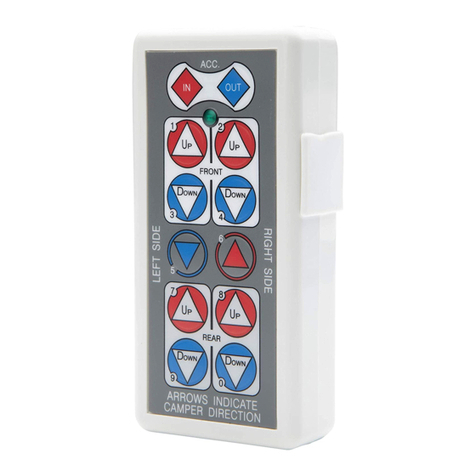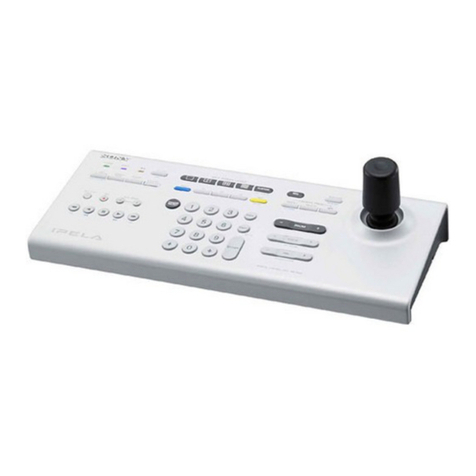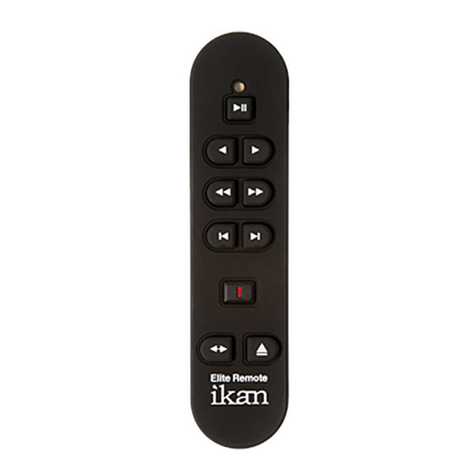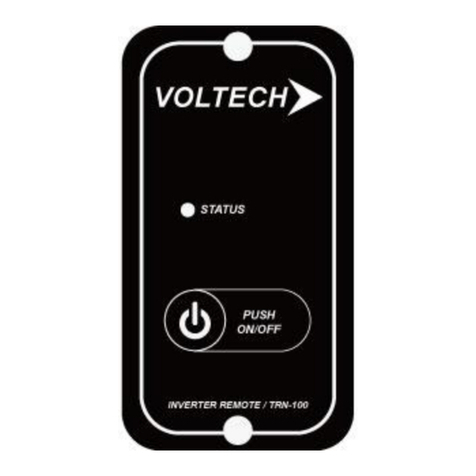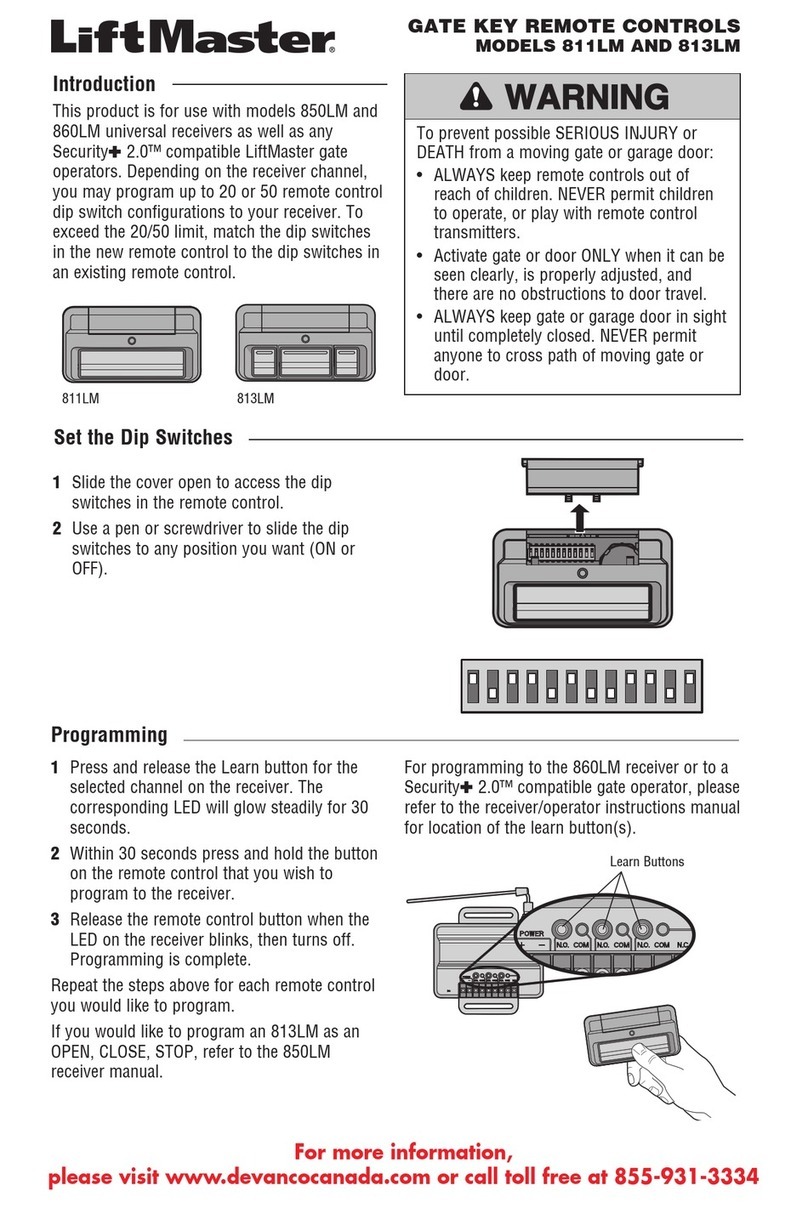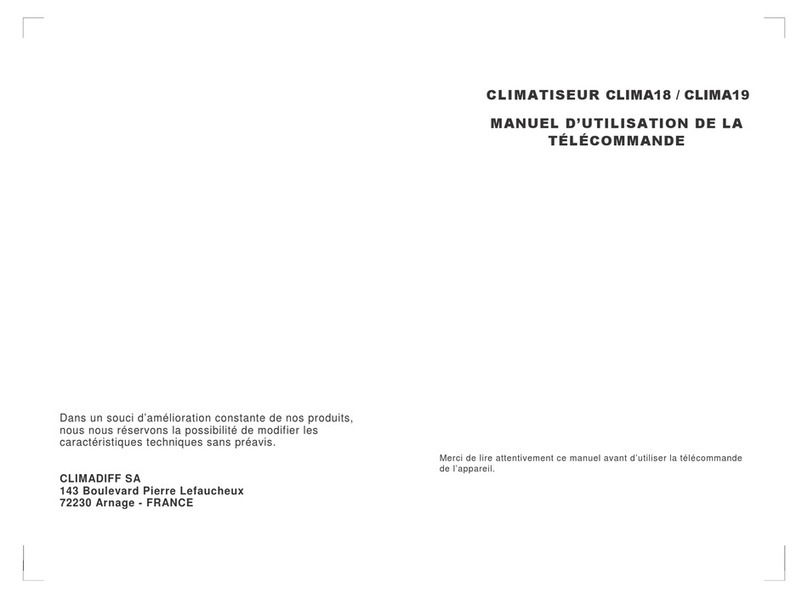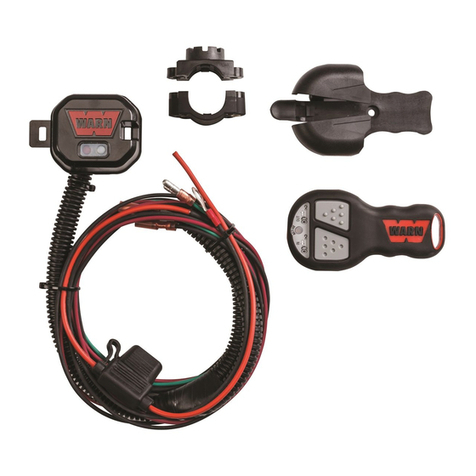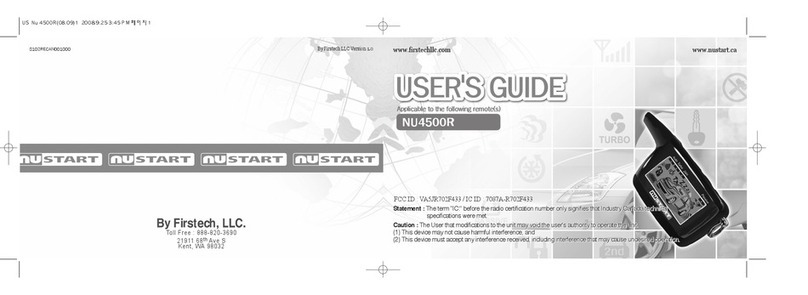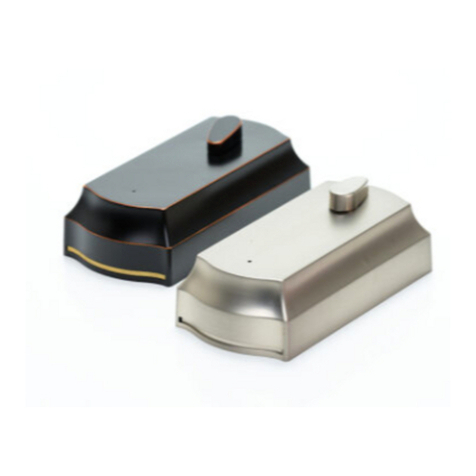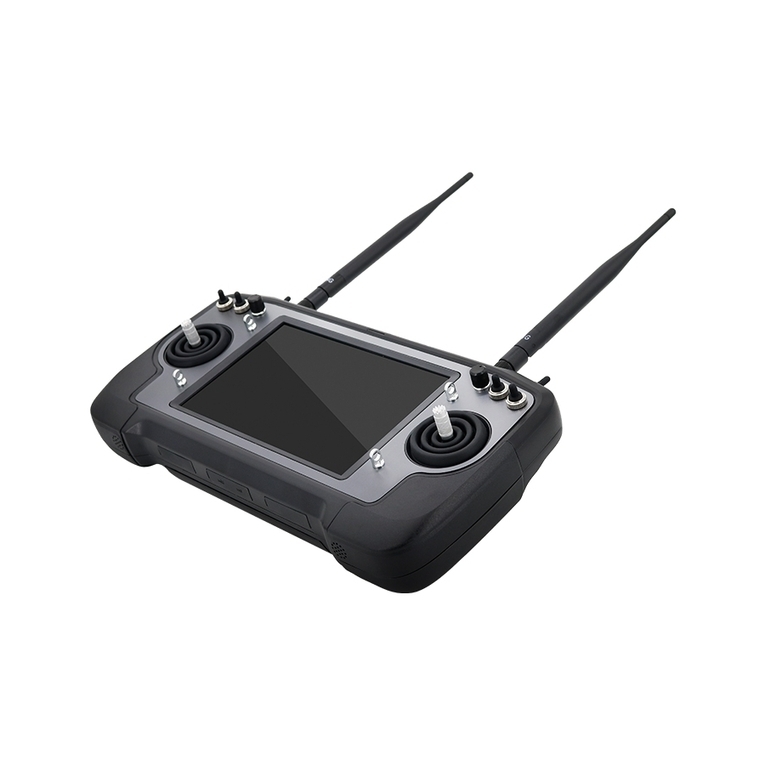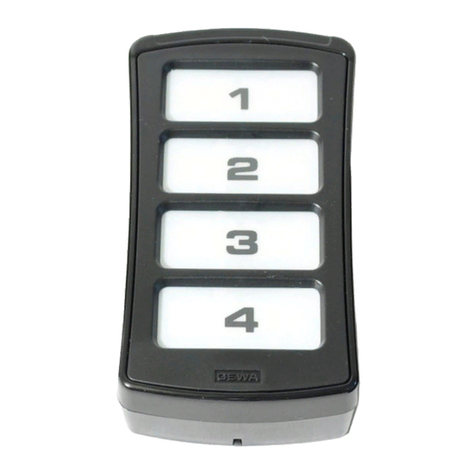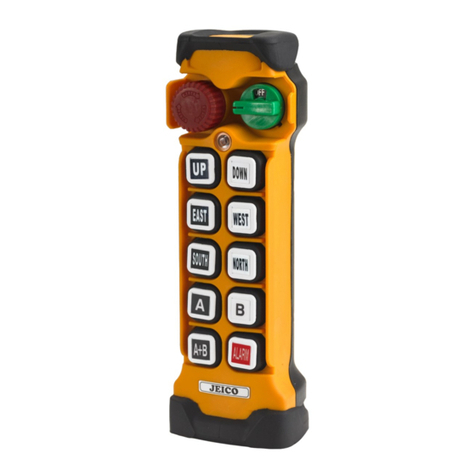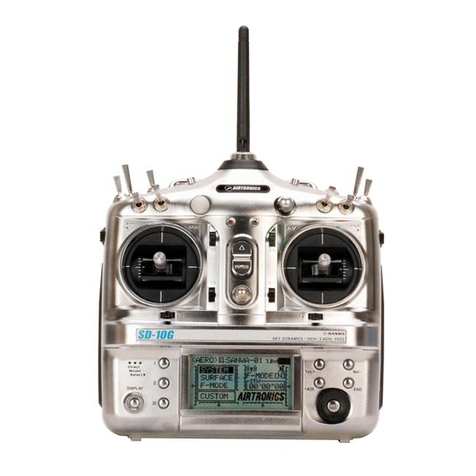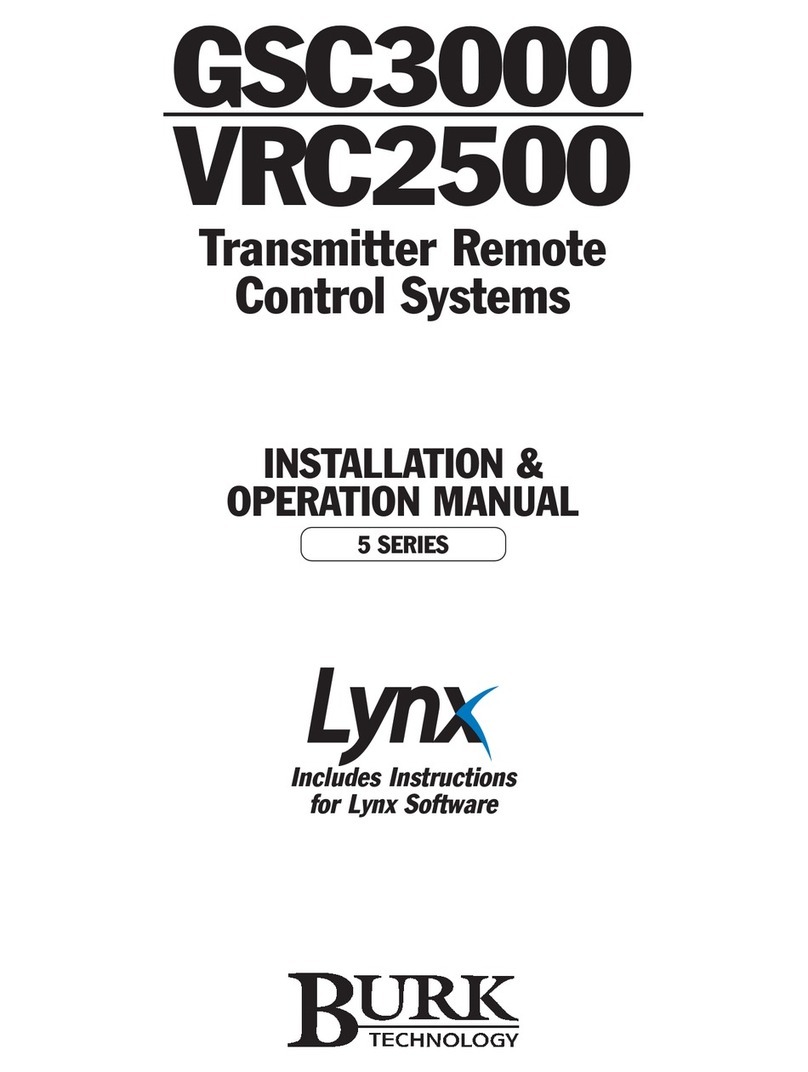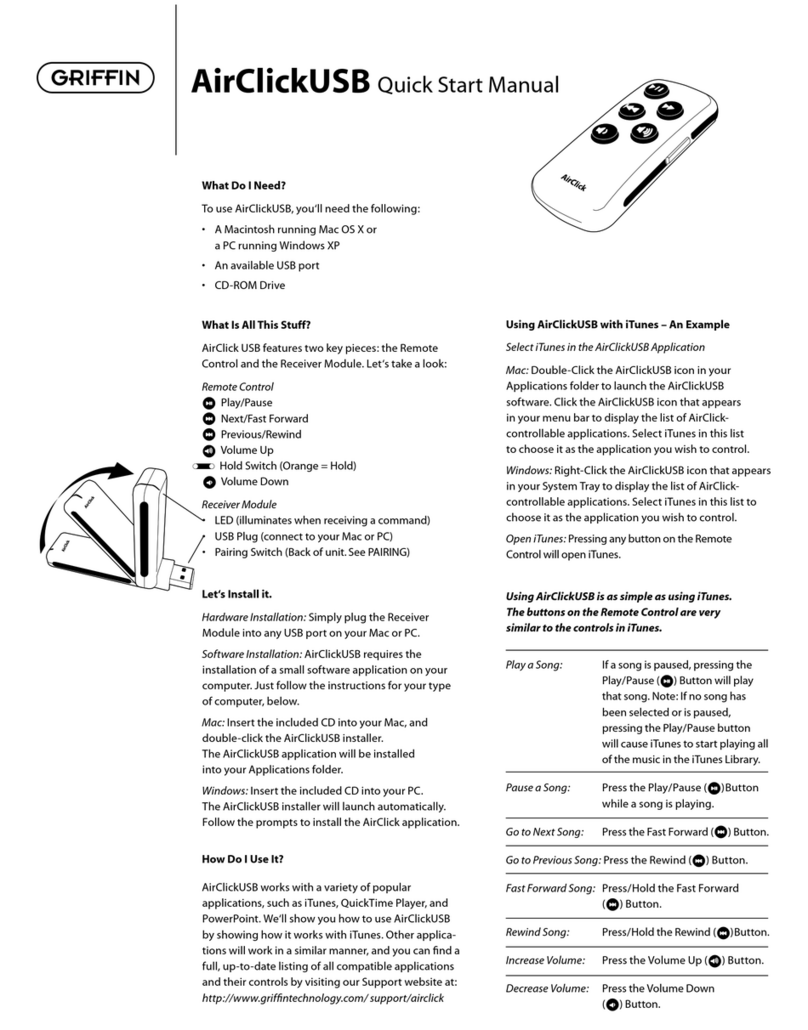LCI Floe 636 Installation instructions

1
lci1.com 574-537-8900 Rev: 11.05.20
Floë 636 Integrated
Water Drainage System
Installation and Owner’s Manual
(For Aftermarket Applications)
CCD-0003522
Table of Contents
Introduction ............................................ 1
Safety ................................................... 2
Resources Required ................................... 2
Parts List ................................................ 2
Installation Of Model 636 .............................. 2
Preparation ............................................ 2
Attach Box To Wall .................................... 3
Connect Tee Fittings And Air Line ..................... 3
Connect To 12V DC Power Supply .................... 4
Test For Air Leaks ..................................... 4
Operation ............................................... 5
What Is Floë ........................................... 5
Importance Of A Sealed System For Draining ......... 5
General Guidelines For Model 636 .................... 6
Model 636 Operation .................................. 6
RV Water System Diagram ............................ 7
Troubleshooting ........................................ 8
Floë 636
Induratec
Integrated
12V DC Water
Drainage System
Installation and
Owner’s Manual
(For Aftermarket Applications)
Floë Water Drainage KitFloë Water Drainage Kit
Part #Part # DescriptionDescription
809127 Model 636 12V DC water drainage system
Introduction
Floë is a water drainage device that will remove residual
water trapped in water supply systems in RVs, marine
vessels and mobile vehicles with a 12V DC electrical
system. This will prevent the pipes from freezing in the
winter and also flush out stale water in the summer.
Additionally, it will remove dirt and lime scale from hot
water heaters.
Additional information about this product can be obtained
from lci1.com/support or by using the myLCI app.
Replacement kits can be ordered from https://store.lci1.
com or by using the myLCI app.
The myLCI app is available for free on iTunes®for iPhone®
and iPad®and also on Google Play™for Android™users.
iTunes ®, iPhone®, and iPad®are registered trademarks of
Apple Inc.
Google Play™and Android™are trademarks of Google Inc.

2
lci1.com 574-537-8900 Rev: 11.05.20
Floë 636 Integrated
Water Drainage System
Installation and Owner’s Manual
(For Aftermarket Applications)
CCD-0003522
Parts ListSafety
This manual provides general instructions. Many variables
can change the circumstances of the instructions, i.e., the
degree of difficulty, operation and ability of the individual
performing the instructions.
This manual cannot begin to plot out instructions for
every possibility, but provides the general instructions,
as necessary, for effectively interfacing with the device,
product or system. Failure to correctly follow the provided
instructions may result in death, serious personal injury,
severe product and/or property damage, including voiding
of the LCI limited warranty.
THE “CAUTION” SYMBOL ABOVE IS A SIGN THAT
A PROCEDURE HAS A RISK INVOLVED THAT MAY
CAUSE PERSONAL INJURY OR PROPERTY DAMAGE
IF NOT PERFORMED SAFELY AND WITHIN THE
PARAMETERS SET FORTH WITHIN THIS MANUAL.
THE “WARNING” SYMBOL ABOVE IS A SIGN AN
INSTALLATION PROCEDURE HAS A SAFETY RISK
AND MAY CAUSE DEATH, SERIOUS PERSONAL
INJURY OR SEVERE PRODUCT AND/OR PROPERTY
DAMAGE IF NOT PERFORMED SAFELY WITHIN THE
PARAMETERS SET FORTH IN THIS MANUAL.
Model 636Model 636
DescriptionDescription QtyQty
Floë Induratec 636 1
Air line, 13’ 1
CTS one-way double valve tee, 1/2” 1
CTS barbed connectors, 1/2” 2
Hose clamps 2
Shutoff fitting, 3/8” 1
Right angle fitting, 3/8” 1
Barbed connector, 3/8” 1
Anti-vibration washers 4
Pan head screws 4
White retainer washers 4
Black screw caps 4
Fused DC cable, 13’ 1
In-line DC switch 1
Cigar/cigarette lighter connector 1
Cable tie 1
Anti-splash cloth 1
Resources Required
• Phillips head screwdriver
• Pipe cutter, garden shears
or craft scissors
• Snips or hacksaw blade
• Awl or punch to mark
holes for screws
• Pliers
NOTE: Images used in this document are for reference
only when assembling, installing and/or operating this
product. Actual appearance of provided and/or purchased
parts and assemblies may differ.
Installation Of Model 636
Preparation
NOTE: When cutting the main water line and air lines, use
thumb and forefinger to round the ends. Wet ends with
damp cloth before inserting air line into connector. This
ensures they are smoothly fitted and do not drag on any
internal “O” rings inside connectors.
1. Insert end of the shuto valve onto the air line stump,
with the tail of the shuto valve pointed toward Floë (Fig.1).
Fig.1

3
lci1.com 574-537-8900 Rev: 11.05.20
Floë 636 Integrated
Water Drainage System
Installation and Owner’s Manual
(For Aftermarket Applications)
CCD-0003522
Fig.3
4. Cut 2” o the air line to t onto the end of the elbow and
then onto one end of the shuto valve. (Fig.3).
On/Off button
tab
tab
screw
cap
white retainer
washer
screw
anti-vibration
washer
Fig.4
2. The shuto valve is a second safety valve and should be
used as a backup to the rst one-way safety valve built into
the tee.
3. If the air line needs to be installed horizontally to avoid
kinking, t the elbow joint (Fig.2) onto the air line stump on
the Floë box.
NOTE: The longer air line will be connected to the shutoff
valve after the box is installed on the wall.
Attach Box To Wall
1. Locate a secure surface for installing the Floë box within
13’ of a 12V power supply and within 13’ of the water
supply line from the water tank or outside the wall.
NOTE: The On/Off button on top (Fig.4) must be accessible
or the in-line DC switch will need to be used for operation.
NOTE: Toggle bolts or, if necessary, dry wall rawl plugs
can be used if installing the Floë box on drywall.
NOTE: It is not recommended to install the Floë unit on
an outside wall since it could create bumps on the outside
finish of RVs.
NOTE: Floë should be installed upright, not flat. Try to use a
corner, door jamb or cupboard to keep Floë straight and level.
Connect Tee Fittings And Air Line
1. Make sure to switch o the pump and any other
electrical devices. Locate the hose leading from the fresh
water tank to the lter and pump.
2. Using pipe cutters or shears, cut through the hose near
the water tank.
NOTE: Cut the hose 2” from the water tank, or as close as
possible, but still allow for fitting of barbed connector. Do
not cut the hose in a section that is curved. A curve puts
undue pressure on joints and can cause air leaks.
Fig.2
2. Use an awl or punch to make indentations to start the
screws, beginning with the screws on the bottom of the
box.
3. Install white retainer washers on the screws and insert
screws through holes in the box tabs (Fig.4).
4. Then place anti-vibration washers on screws (Fig.4) and
fasten the box to the wall. Leave box loose to allow for
vertical adjustment.
5. Insert the top screws and washers into the tabs on the
Floë box and, after making nal adjustments, attach the
box to the wall.
6. Tighten screws until the white retainer washers can no
longer move. Do not overtighten. Overtightening could
crack the green box tab.
7. Snap on black caps over the retainers on the screws.

4
lci1.com 574-537-8900 Rev: 11.05.20
Floë 636 Integrated
Water Drainage System
Installation and Owner’s Manual
(For Aftermarket Applications)
CCD-0003522
Connect To 12V DC Power Supply
1. The supplied 13’ DC wire has male and female
connectors and a fuse (Fig.8). Connect one end of the
connector to the Floë box and the other end to a power
supply.
NOTE: The white connector can also be removed to create
bare wires on the end. Then it can be fitted to a fuse box or
fitted directly to the battery using ring terminals.
NOTE: The fused wire is for a red/positive connection and
can also be fitted onto an optional in-line switch included
with the kit (Fig.8).
2. The 15A power plug can be tted to a cigar/cigarette
lighter socket (Fig.8). Connect one end to the connector on
the Floë box and the other end to a socket.
3. Use a cable tie to hold together excess cord.
Tank
Faucet
Fig.5
Fig.6 Fig.7
13’ DC Wire
power plug
in-line switch
short side
to pump
long side
to tank
Fig.8
NOTE: Use a cloth to mop up excess water from the cut
water line.
3. Insert teeth end of the barbed connector onto the end of
the hose (Fig.5).
4. Slide hose clamp over end and tighten (Fig.5).
5. Repeat process for other side of the cut hose.
6. Fit the ends of the ½” air line tee rmly into the
connectors, utilizing the tee’s push-t connections (Fig.6).
The long side of the tee should extend toward the tank while
the shorter side should extend toward the pump (Figs.6, 7).
NOTE: If larger or smaller pipes are used, adapters can
be purchased from hardware stores. Additionally, the tee
can also be fitted to rigid plastic and copper pipes without
adding barbed connectors.
NOTE: There are two one-way valves built into the tee.
One is to stop water escaping back up into the Floë unit.
The other is to stop air traveling back into the water tank,
where it would escape out of the tank air vent.
7. Measure the distance from the air line shuto valve on
the Floë box to the tee installed on the water line.
8. Cut air line to length, leaving at least an extra half inch to
an inch of air line to slide into the connectors.
Test For Air Leaks
At this point Floë has been dry fit. Test that all joints
leading up to the main water line are fitted correctly without
air leaks. Locate the main water line tee and remove the
barbed connector from the short end of the tee leading
to the faucets, NOT the water tank long end. The barbed
connector is removed by pulling back on the collar of the
tee that holds the barbs in place.
Place a finger into the tee to seal this end and switch on
Floë. Floë should be tricked into stopping at 15 psi. If Floë
stops, then the joints leading to the water system are fine.
If Floë doesn’t stop, then remove, wet and reseat the air
line into the connectors leading back to Floë. It is essential
there is a good seal on the open end of the tee to allow this
test to work.
To Tank
To Pump

5
lci1.com 574-537-8900 Rev: 11.05.20
Floë 636 Integrated
Water Drainage System
Installation and Owner’s Manual
(For Aftermarket Applications)
CCD-0003522
What Is Floë
After the water has been switched off and the water
removed from the hot and cold water tanks in the RV,
marine vessel and mobile vehicle, Floë 636 is a water
drainage system with an internal automated compressor
that will remove all residual water left in the water pipes
leading to the faucets, showers, toilets and other outlets.
This will prevent pipes and components from freezing in
the winter and clean pipes of stale, unused water in the
summer.
Operation
MODEL 636: DO NOT CARRY OUT A DRAINDOWN
WITHOUT FIRST DRAINING THE FRESH WATER
TANK AND HOT WATER HEATER.
DO NOT CARRY OUT MORE THAN ONE COMPLETE
DRAINDOWN WITHOUT LETTING THE FLOË SYSTEM
REST FOR 30 MINUTES.
DO NOT PRESSURIZE THE SYSTEM FOR MORE
THAN ONE MINUTE WITHOUT RELEASING WATER
OR AIR.
DO NOT SWITCH OFF FLOË WITHOUT ALSO TURNING
OFF THE BLUE SHUTOFF VALVE AFTERWARD.
DO NOT DISCONNECT THE SYSTEM WITHOUT
INSTRUCTION FROM THE MANUFACTURER AND DO
NOT USE THE SYSTEM FOR ANYTHING OTHER THAN
THE INTENDED USE.
In addition, Floë is scientifically proven to clean the water
system to 99.95% with just fresh compressed air, which is
as good as a sterilizer but without the aftertaste. Regular
draindowns through the summer season will keep the
water system in showroom condition. There is no more
need for bottled water in the summer or the need for
antifreeze in the fresh water system in the winter.
Two complete draindowns are recommended initially to
identify any individual outlets that may require draining a
second time. Different homes and vehicles have different
layouts, so a second draindown will determine which
outlets to return to, if any.
A complete draindown is the removal of water from all
outlets. For instance, if there are 10 water outlets, draining
all 10 would be considered a complete draindown.
Draining one or two additional outlets a second time is
acceptable during the first draindown. However, do not
complete a second complete draindown without first
switching off Floë and letting it cool down for 30 minutes.
Importance Of A Sealed System For Draining
Floë works on a sealed system to build up the air pressure
to 15 psi (1BAR). It is similar to inflating a tire. If there is a
puncture in the tire, the air pressure will not build and the
tire will not inflate.
Similarly, should there be any leaks in a water system, Floë
will not be able to build up pressure and a draindown will
not be possible.
All faucets, tank dump valves, city water inlet and assorted
outlets must be closed to seal the system completely. It is
only then that the air can be inserted and pressure will rise
to the prescribed amount to push water out of the system.
Also, make sure the system is set to drawing water from
the onboard water tank and not the city water inlet.
NOTE: Although some may question whether 15 psi of air
pressure is enough to remove all of the water in an RV,
note that 15 psi with the volume of all the pipes is more
than enough to drain a large house or office block.

6
lci1.com 574-537-8900 Rev: 11.05.20
Floë 636 Integrated
Water Drainage System
Installation and Owner’s Manual
(For Aftermarket Applications)
CCD-0003522
General Guidelines For Model 636
It is advisable to drain the RV, marine vessel or mobile unit
after most trips in order to maintain a clean, fresh water
system while also offering frost protection in the winter.
For extended periods between use, add sterilizer as a
backup. Draw some sterilized water through the faucets
and outlets and leave to activate for a couple of hours.
Afterward, draindown water system again and leave empty
and sterile for the next trip.
Floë works on a sealed system to build up the air pressure
to 15 psi. Should there be any air leaks, Floë will not be
able to build up pressure and it will prevent a draindown.
A typical draindown occurs when:
• Floë is properly connected;
• the blue shutoff valve is in the open position.
• the fresh water and hot water tanks have been drained.
• all water tank dump valves and all faucets and outlets are
closed again to seal the system and the toilets have not
been flushed.
Additionally, make sure the system is set to draw water
from the onboard water tank and not the city water inlet. It
is only then that air can be inserted and pressure will rise
to the prescribed amount to push water out of the system.
When Floë is switched on, the motor should only run for 30
to 60 seconds before reaching 15 psi and shutting off. This
time will change slightly after draining the first pipe leading
to the first faucet. As water is being removed, more air
will be inserted to fill the space. Floë will now take slightly
longer to build up pressure for each faucet and outlet that
are drained.
Model 636 Operation
NOTE: Reference figure 9 during the operational
procedures.
1. Manually drain water tanks and water heater and close
dump valves for all.
2. Set valves to bypass water heater, as if using antifreeze
for the system.
3. Close all faucets and outlets to seal water system
(Fig.9). Make sure the system is set to draw water from the
onboard water tank and not the city water inlet. Make sure
the city water inlet is closed and sealed. Do not yet
ush toilets.
4. Open the blue shuto valve under Floë and switch on
the Floë unit to push compressed air into the system.
Once 15 psi is reached, the motor will stop. This takes
about 30 to 60 seconds. If it takes longer than 90 seconds
for the motor to stop, switch o Floë and consult the
Troubleshooting section.
5. Go to any faucet and open it. The compressed air will
push out the water until only a spray mist of water and air
remains. Floë will automatically restart to help push out any
remaining water.
6. Once drained, close the faucet.
7. When 15 psi of pressure has been reached again, the
Floë motor will stop. This will take about 30 seconds for
every outlet.
8. Repeat steps 5 and 6 for all remaining hot and cold
faucets and showers inside and out. Showers or faucets
may have mixer valves and therefore two pipes leading to
them, both hot and cold. Both need drained, so remember
to switch to cold and drain and then over the hot side
and drain.
9. Drain water tank-fed toilets by pushing down the ush
handle or pedal.
10. Residual water can be drained from the water heater
by building up pressure and reopening the valves that
bypassed the water heater and opening the outside dump
valve. After draining the water, again set valves to bypass
water heater.
11. When nished draining the main system, build up
pressure again and pull out the city water lter plug outside
and drain any residual water. When removing the lter,
remember to step out of the way of spraying water. It
may be necessary to switch to drawing water from the city
water main.

7
lci1.com 574-537-8900 Rev: 11.05.20
Floë 636 Integrated
Water Drainage System
Installation and Owner’s Manual
(For Aftermarket Applications)
CCD-0003522
Fig.9
RV Water System Diagram
12. Once all faucets and outlets have been drained, switch
o Floë and close the blue shuto valve. Leave all faucets
and outlets in the open position since fresh air is a good
sterilizer. Showers or faucets may have mixer valves and
therefore two pipes leading to them, both hot and cold.
Remember to leave in the open position but leave it set to
the middle between hot and cold.
13. Make sure to remove the water lter and empty
residual water since some lters have a drop bowl and the
pressurized air may drift over the top of the water.
14. In the winter, pour half a cup of antifreeze into the sink
and shower drain holes. Wipe o any spilled antifreeze to
avoid staining the chrome/gold nish.

8
lci1.com 574-537-8900 Rev: 11.05.20
Floë 636 Integrated
Water Drainage System
Installation and Owner’s Manual
(For Aftermarket Applications)
CCD-0003522
Manual information may be distributed as a complete
document only, unless Lippert Components provides
explicit consent to distribute individual parts.
All manual information is subject to change without
notice. Revised editions will be available for free
download at lci1.com. Manual information is considered
factual until made obsolete by a revised version.
Please recycle all obsolete materials and contact
Lippert Components with concerns or questions.
Troubleshooting
Model 636Model 636
What isWhat is
happening?happening? Why?Why? What should be done?What should be done?
Floë does
not stop.
Malfunction
or air leaking
from one
of the
connections.
All air line pipes need to be rounded off with thumb and forefinger, ends wet and inserted straight
into push-fit connectors. This gives it the best air tight seal possible. Should Floë not stop at
15 psi, it is most likely because there is a tiny air leak somewhere preventing it from reaching
this pressure. Therefore, start testing at Floë and work toward the main water tee continuously
testing along the way.
First, remove the connector from under Floë and press thumb tightly over the end of the short
stump of air line to make a good seal. This is the only way to determine if Floë is functioning
properly; it should stop after one second with a tight seal. If Floë does not stop, contact customer
service. If Floë stops, the unit is fine, so wet the end of air line and reinsert into connector. Move
to the end of the air line, where it enters the main water valve tee and remove air line from tee.
Hold thumb over end of air line and switch Floë on. If Floë stops, the joints are good leading
back to Floë. If not, then the leak is with one of the connectors before and leading back to Floë,
so remove, check, wet and re-insert each connection, testing each time until Floë does stop,
To test the main water tee, remove the water line barbed connector from the short end of the
tee leading toward the faucets, NOT the long end to the water tank. Insert little finger into tee to
make an air-tight seal. This will test that all joints are secure, while making sure that air is not
escaping from the tee. If Floë stops, then move on. If Floë does not stop, recheck and tighten
both barbed connectors, wet and reseat connectors into tee. Note that this is the only connector
that will seal by inserting finger. The rest of the time, only test the ends of the air line. Leaks can
also be determined by spraying soapy water on the joints and watching for bubbles.
If all air line
connections
are sealed
and Floë
still does not
stop after 90
seconds.
Small air
leak.
If all connections up to and including the water valve tee are fine yet Floë does not stop, then
the problem is likely to be in the vehicle or vessel. So switch off Floë and make sure all faucets,
outlets and dump valves for the water heater and city water connections are closed. Also, make
sure the water heater has been bypassed. While Floë is running, listen for escaping air from
all faucets, toilets and hot water tank and all dump valves. Make sure the system is set to draw
water from the onboard water tank and not from the city water inlet. Try switching Floë on again
and, if it stops, the system is pressurized. If not, call customer service.
This manual suits for next models
1
Table of contents
Other LCI Remote Control manuals

